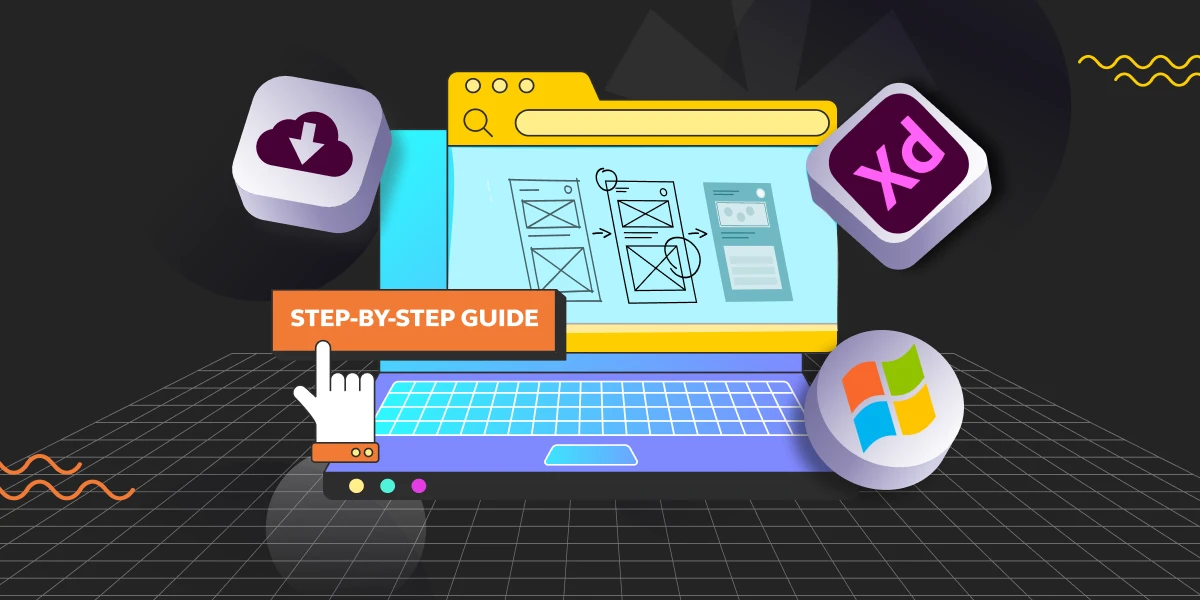
What is User Interface (UI) ?| A Complete Guide
Mar 21, 2025 4 Min Read 5077 Views
(Last Updated)
We all are dependent on the Internet for our daily tasks, and thus we need a user-friendly user interface to interact with. To create rich UIs, you need to have great skills in UI design. If you are new to this concept and you want to explore what is user interface all about, you’ll get to know it all here.
In this blog, we’re going to dive deep into the concepts of user interface. First, we’ll be going through the basics of UI, followed by what does a UI designer do to understand certain roles and responsibilities they hold. You’ll read how to build an attractive and efficient user interface (UI) that optimizes the user experience (UX). Also, we’ll be understanding the importance of creating a great UI.
So, without wasting any time, let’s move ahead.
Table of contents
- What is User Interface (UI)?
- What does a UI designer do?
- How to Make a Great UI | Key Steps Followed
- UI Designer's Salary
- Importance of Great UI
- Wrapping it Up
- FAQs on User Interface
- Q. What does the user interface stand for?
- Q2. What is the function of the user interface UI?
- Q3. What is the Importance of user interface?
- Q4. How to learn UI design?
What is User Interface (UI)?
User Interface (UI) refers to the usage of elements, icons, and graphics in a web page that makes the user’s journey feasible/user-friendly. It includes everything used in an application with which a user interacts including screens, pages, buttons, icons, and any other visual elements.
The primary goal of a user interface is to facilitate effective communication between the user and the system, allowing users to interact with and control the system in an intuitive and efficient manner.
UI design involves creating visually appealing and user-friendly interfaces that consider factors such as ease of use, accessibility, and overall user experience. It extends beyond just visual elements to include the overall layout, navigation, responsiveness, and the way information is presented to users.
Explore 8 Effective Ways to Learn UI/UX Design [2025]
Types of User Interface:
The various types of user interfaces include:
- Graphical User Interface (GUI)
- Command Line Interface (CLI)
- Voice User Interface (VUI)
- Touchscreen Interface
- Augmented Reality (AR) Interface
- Virtual Reality (VR) Interface
Examples of User Interface:
Some examples of user interfaces include:
- computer mouse
- remote control
- virtual reality
- Motion-Based Interface
- Touchscreen Interface
- ATMs
- speedometer
- the old iPod click-wheel
As we proceed to the next phase, make sure you understand the fundamentals of UI/UX, which includes heuristic analysis, journey maps, testing, etc. If you want to explore more about it, join GUVI’s UI/UX Course with placement assistance. You’ll also learn about the tools used in UI/UX which are AdobeXd, Illustrator, Photoshop, Figma, and many more. Build some amazing real-time projects to get hands-on experience.
Instead, if you would like to explore Figma through a Self Paced course, try GUVI’s Figma certification course.
What does a UI designer do?
A User Interface (UI) designer is responsible for creating visually appealing, intuitive, and functional interfaces that enhance the user experience of a product or system. Their primary focus is on the design of the graphical elements and interactive features that users interact with.
You need to have the necessary skills required to become a UI designer. To have that, you need to also understand what are the daily life challenges a UI designer faces while implementing a user-friendly interface.
Also, you must understand the key differences between UI vs. UX, in order to not get confused with both of the concepts.

The key tasks and responsibilities of a UI designer are:
- User Research: UI designers often start by understanding the target audience and their needs through user research. This involves studying user behaviors, preferences, and pain points to inform the design process.
- Wireframing and Prototyping: UI designers create wireframes and prototypes to outline the structure and flow of the interface. Wireframes are basic layouts, while prototypes are interactive models that allow stakeholders to preview the user interface.
- Visual Design: UI designers are responsible for the visual aesthetics of the interface. This includes choosing color schemes, typography, icons, and other visual elements to create a cohesive and visually pleasing design.
- Information Architecture: Organizing information clearly and logically is crucial. UI designers work on the information architecture to ensure that users can easily navigate through the interface and find the information they need.
- Interaction Design: Designing interactive elements such as buttons, forms, and navigation menus is a key aspect of UI design. This involves creating designs that provide feedback to users and guide them through the user interface.
- Responsive Design: With the prevalence of various devices and screen sizes, UI designers need to ensure that the interface works well across different platforms. They design interfaces that are responsive and adaptable to different screen sizes and resolutions.
- Collaboration with UX Designers: UI designers often work closely with User Experience (UX) designers. While UX designers focus on the overall user experience and usability, UI designers concentrate on the visual and interactive aspects of the interface. Collaboration ensures a seamless and holistic design.
- Prototyping Tools: UI designers use various prototyping tools like Sketch, Adobe XD, Figma, or InVision to create interactive prototypes that demonstrate the functionality and flow of the interface.
- Design System Maintenance: In larger projects, UI designers contribute to or maintain a design system. A design system is a collection of reusable components, patterns, and guidelines that ensure consistency across different parts of a product.
- User Testing and Feedback: UI designers may conduct usability testing to gather feedback from real users. This feedback helps them refine and improve the interface based on user preferences and behaviors.
With that being said, now let’s look into what are the steps followed to create great UIs.
How to Make a Great UI | Key Steps Followed
Creating a great User Interface (UI) involves a combination of design principles, user-centered considerations, and attention to detail. Here are some key steps and guidelines to help you make a great UI:

- Understand Your Users
- Define Clear Objectives
- Simplify Navigation
- Consistent Design
- Prioritize Readability
- Use Visual Hierarchy
- Responsive Design
- Interactive Elements
- Feedback and Error Handling
- Minimize Cognitive Load
- Accessibility
- Usability Testing
- Stay Updated with Design Trends
Now that you know enough about UI, it’s time to follow a roadmap, we have one curated for you – UI/UX Designer Roadmap which will help you to follow a guide to make an informed decision.
UI Designer’s Salary
The demand for UI designers is huge and also it is a promising career. Thus, you can predict that the profession is definitely high-paying. The salary of a UI designer varies on several factors like location, skills, experience, etc.
Let’s look at the UI Designer’s salary based on experience:
| In India | Average Salary |
| Fresher | INR 2.4 LPA – INR 5.7 LPA |
| Experienced | INR 12 LPA – INR 15 LPA |
The figures given above are taken from AmibitionBox.
You can also check the salary of UI designers in India based on different parameters and roles offered.
Importance of Great UI

Here are some of the importance of creating great UI:
- Enhanced User Experience (UX)
- Increased User Engagement
- Ease of Navigation
- Branding and Perception
- Accessibility and Inclusivity
- Efficiency and Productivity
- Reduced Errors
- Adaptability to Multiple Devices
- User Trust and Credibility
- Competitive Advantage
Kickstart your UI/UX journey by enrolling in GUVI’s UI/UX Course where you will master technologies like AdobeXd, Illustrator, and Figma, and build interesting real-life UI/UX projects.
Alternatively, if you would like to explore Figma through a Self Paced course, try GUVI’s Figma certification course.
Wrapping it Up
Got to know everything in detail, Right? Now, fasten your seatbelt and start learning the key skills required to become a successful UI designer. This blog has covered each detail to help you make an informed decision about your User Interface journey and elevate your career. Get your foot into this promising profession and try to keep yourself with the trend.
Also Read: UI Design Patterns
FAQs on User Interface
Ans. User Interface (UI) refers to the usage of elements, icons, and graphics in a web page that makes the user’s journey feasible/user-friendly. It includes everything used in an application with which a user interacts including screens, pages, buttons, icons, and any other visual elements.
Ans. The function of a user interface is to make the user experience easy and user-friendly, which requires
The user interface is the point at which human users interact with a computer, website or application. The goal of effective UI is to make the user’s experience easy and intuitive, requiring minimum effort on the user’s part to receive the maximum desired outcome.
Ans. Some of the importance of user interface are:
Simplify Navigation
Consistent Design
Prioritize Readability
Use Visual Hierarchy
Responsive Design
Interactive Elements
Ans. To learn UI design, you can consider following a roadmap, UI/UX Designer Roadmap, also you can check for a course – GUVI’s Professional UI/UX Design Career Program.












![What Does a UI/UX Designer Do? [Career Guide] 8 UI/UX](https://www.guvi.in/blog/wp-content/uploads/2023/12/What-Does-a-UI_UX-Designer-Do_.png)






Did you enjoy this article?